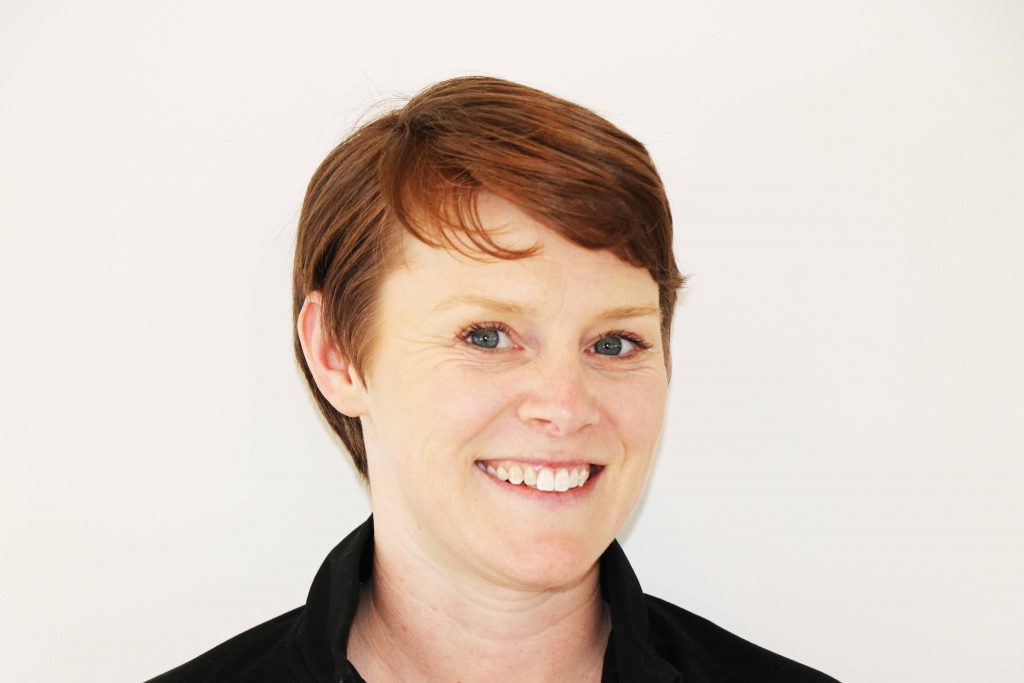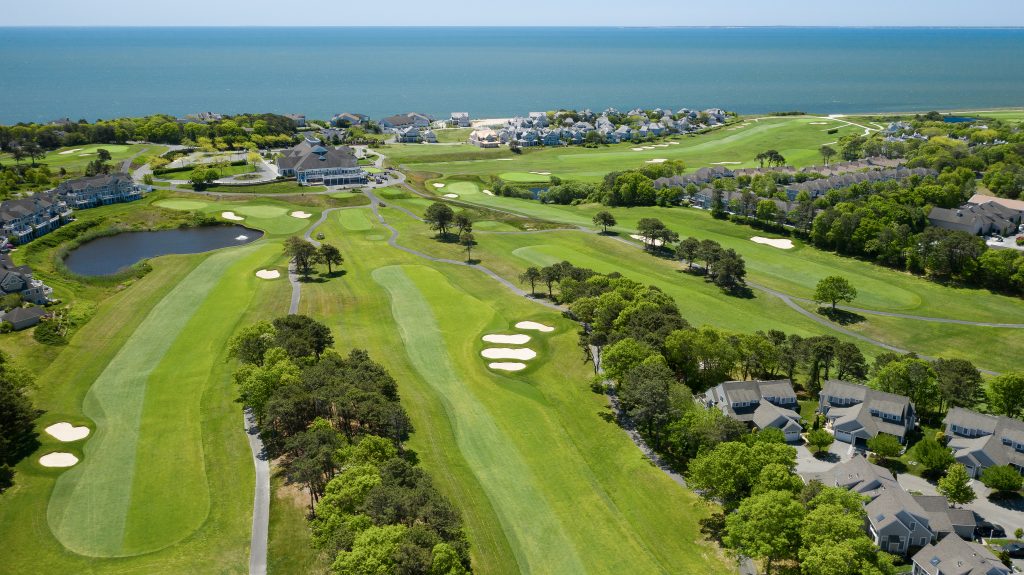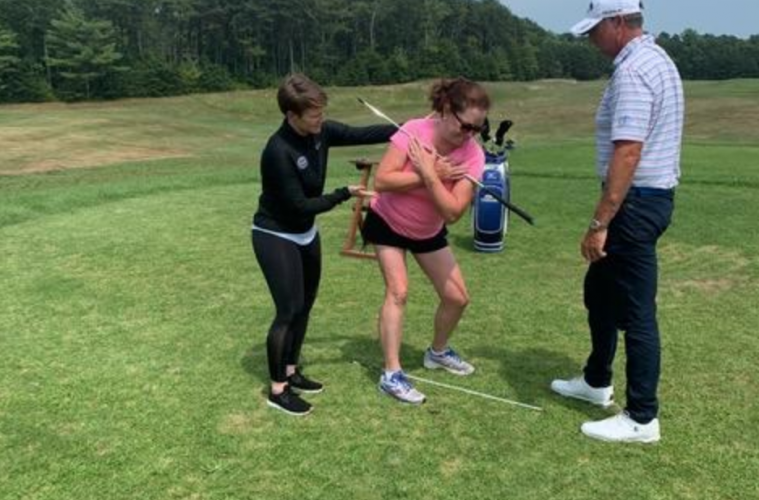BACKGROUNDER —
Amy Warr is a certified fitness and wellness professional with a background in Kinesiology and Psychology who has worked in the industry for the past 13 years. She specializes in musculoskeletal biomechanics, functional alignment, strength and conditioning, Pilates and Yoga instruction. In addition, she has developed comprehensive fitness programs in University and Private Club settings that accommodate all interests, be it active healthy living or sports-specific performance in tennis and golf.

THE WARR STORY —
In reflecting upon experiences that were career-defining, my time spent within the Charlottesville community was of greatest influence to my professional growth. The University of Virginia offered a broadened scope and volume of programming with responsibility in four state-of-the art facilities and two aquatic spaces. I also expanded new responsibilities beyond fitness programming that included wellness — massage therapy, nutrition, employee wellness — sports-specific performance via racquet sports,aquatics and academic course instruction. We had a consistent focus and commitment to offer quality, yet cost-effective services for students and faculty / staff to complement market trends. It challenged us to be creative and required forward-thinking.
My professional experience shifted into a more private setting, when I joined The Boar’s Head Resort, a Four Diamond Resort, premier fitness club and racquet facility and home to University of Virginia’s nationally-acclaimed tennis, squash, and golf programs. Throughout my tenure, I gained exposure to more sports-specific programming, community outreach, and collaboration across the property to accommodate both members and resort guests. Special events included both national and international tennis and squash tournaments, oversight of an annual fundraising 5K fitness event in partnership with the University of Virginia Children’s Hospital, and community fundraising efforts, such as a Spin-A-Thon benefiting Toy Lift charities.
 Overall, my time spent in Charlottesville, VA, provided me with invaluable knowledge of and exposure to diverse populations, abilities, cultures, and the demands set forth by each. My experience in leadership roles within varying business models, whether public University or private settings, has allowed me to best understand the fundamentals required in order to lead a successful team, while also focusing on a commitment to fitness and wellness programming development.
Overall, my time spent in Charlottesville, VA, provided me with invaluable knowledge of and exposure to diverse populations, abilities, cultures, and the demands set forth by each. My experience in leadership roles within varying business models, whether public University or private settings, has allowed me to best understand the fundamentals required in order to lead a successful team, while also focusing on a commitment to fitness and wellness programming development.
***
You wake up in the morning – what’s the driving passion?
Impact. It’s what drives my passion both personally and professionally. I am a teacher by heart and leader by nature. As a trainer, instructor, manager, and mom, the opportunities I am allowed each day to impact one’s life are a privilege. Whether I’m teaching exercise independence, improving performance in a sport loved, increasing longevity of health, or simply training for ease of movement, the connections made with people are awe-inspiring.
What differentiates your approach when compared to others doing likewise in the field?
My commitment to developing partnerships, functional alignment, and learning are what differentiate my approach. With a background in Psychology, I understand that behavioral change requires relationship building, establishment of trust, active listening, and an individual approach when working with clients. With a background in Kinesiology, I understand that motor learning is an improvement of motor skills through practice, which also requires an individual approach to teaching. No two clients are the same, nor should their exercise or performance training be.
Likewise, my commitment to functional alignment supports the understanding that there is variance in bone structure, anatomy, muscle tension, limb length, injuries, etc. and that rather than forcing one’s body into position, training should instead reinforce the safest and most effective strengthening, while supporting one’s own anatomy.
Lastly and most importantly, my commitment to learning and continuing education is unparalleled. It is my philosophy to learn, research, and continue growing as a professional. Every new experience and learning opportunity allows for greater versatility. The fitness industry is constantly evolving with new research and it is in our clients and members’ best interests that we continue evolving alongside.

For those interested in finding a qualified instructor — what process should they follow in doing so?
Research and ask questions. The importance of researching and understanding credentials is key before investing in an instructor or trainer. We owe it to ourselves to do our due diligence and keep safety as priority. With fitness certifications readily available online or in one-day trainings, there is significant variance between professional certifications. When looking at credentials, one should look for those who hold educational degrees in Kinesiology-related fields and also hold current certifications from nationally-accredited organizations, those that require both written and practical components to obtain. It is also important to explore a client referral network. Lastly, please remember that both educational background and application of this knowledge is required in order to be most qualified as an instructor or trainer.
From a client perspective — what’s the breakdown percentage gender wise for those interested in golf fitness and wellness?
Only speaking from experience, males tend to gravitate more towards golf-specific fitness and individual training, whereas females tend to invest in a more general and social approach to health & wellness with group training. Ultimately though, it is both individual and personality-dependent, rather than gender specific.
What’s the biggest misconception people have regarding golf fitness and wellness?
One lesson or one session will be enough. The golf swing is one of the most dynamic, explosive, and complex movements in all of sport. Because of the dynamic nature of the golf swing, many parts of the body need to be stabilized, while others are moving at high speeds. Almost every joint and muscle in the body is utilized in some capacity during the swing. A deficiency in just one area can greatly reduce your ability to create an efficient swing.
With the thought that one session is all that is needed comes the notion that progress will be immediate and if not noticed right away, it must not be working. Re-learning a movement pattern free of muscle compensations takes time, but most importantly, requires consistency and commitment to reinforcing.
 Is there a different approach you follow for men versus women?
Is there a different approach you follow for men versus women?
My approach is individual dependent rather than gender dependent. A difference in gender approach comes into play when training teen and young adult athletes as there are growth and development factors to consider, as well as significant changes in the female body around menstrual cycles. It is important to remember to maintain safety and effectiveness in training, especially sports-specific training. What each individual needs and requires, however, in terms of communication and training styles varies far more across individual and personality type than gender type.
My focus when working with any golfer is on development of proper movement patterns, muscle function and firing sequence, and transfer of energy that translate to power, distance and consistency. An athlete’s foundation should be based on optimizing movement of one’s body and by developing strength, mobility, flexibility, and balance, the body can perform at its best.
Regarding golf performance — what kind of results have you produced through your efforts in reducing the handicaps of your students on both the men’s and women’s side?
Results vary from golfer to golfer and can be marginal or minimal. They are directly correlated to the energy and time commitment of the golfer in terms of training, motor learning and reinforcement of both. It is important to understand that motor learning, particularly new learning, involves first understanding the basic pattern of coordination and then continued practice. The golf swing is broken into parts and learning patterns for each. We begin with set up posture, backswing, and complete training into downswing. Additionally, technique and golf instruction compliment movement pattern training. Therefore, results are best determined by the consistent commitment of the golfer under the guidance of fitness and golf professionals.
If you could change one thing in golf unilaterally — what would it be and why?
The notion that warming up the body before play and stretching post play is not important or is overrated. Consistently, players I work with do not stretch, do not know how to, or are putting in the time to but with an ineffective or unbalanced approach, yielding no gains.
Proper warm up is essential for peak performance and injury prevention in any sport. Dynamic movement prepares the body using fundamental patterns needed for swing sequence and effective muscle activation.
Additionally, proper stretching after your event allows muscle fibers used during play to lengthen (rather than remain constricted), impacting golfer’s subsequent play. Having proper ranges of motion in each of the body’s segments and proper awareness of each of these segments is as important as the strength in each muscle. Mobility is needed for proper mechanics in the golf swing, as well as for injury prevention. The combination of joint range of motion and proper muscular flexibility, mobility allows the generation of elastic energy between muscles and in turn, efficient power production.
How do you see golf fitness and wellness evolving in the years ahead?
I foresee a continued shift towards golf fitness training that focuses on both functional training and a balanced approach. The Titleist Performance Institute (TPI) and research continue to support the concept of functional alignment and that there is no perfect way to swing a golf club. The key instead is to make one’s body capable of producing the most efficient swing that he / she can produce with proper mechanical technique and efficiency of movement. Also with TPI, networks of fitness, golf, and medical professionals are forming a collaboration of training approaches that allow optimal performance of each golfer on national and international levels. In addition to maximizing performance, injury prevention is at the forefront when a team combines efforts to keep players healthy and ultimately offer players a lifetime of playing the sport they love.
Best advice you ever received — what was it and who from?
The best advice I have ever received both spoken and unspoken, was from my grandfather. He both taught and showed me the following: Learning is not finite. Rather, learning is evergreen. The mind should never fall complacent. Complacency robs potential. Yes, learning requires effort. Yes, effort is a choice. But with learning and effort, potential is endless.
***
For more info go to:
WHAT'S YOUR REACTION?

